
Product test
Smile! A scent stone to combat kitchen smells
by Pia Seidel

I’m on the hunt for a simple and elegant way to neutralise unpleasant food odours. Is burning incense the solution? It’s time to give it a go.
But I don’t really believe in esoteric things. I just want to use it to neutralise unpleasantspirits smells. Before burning the incense, I clean the kitchen and crack all of the windows open. I then light the white sage leaves on the smudge stick and fan the flames out by wafting them to and fro. It’s this aerating that creates smoke. I put the bunch of sage into a small bowl to avoid burning my fingers on the smouldering embers and dropping ash everywhere.
While I walk from room to room, I fan the smoke into every corner with my hand and imagine the smells disappearing out the window. And a balmy wave of sage sloshes through the room. One of them washes the scent of sage rather than mussels to the shore, making me think I’ve been transported to a forest. That must be because the aroma is slightly reminiscent of pine.
Once my lap is complete, I extinguish the bunch in one of my plant pots before putting it back in the bowl. That way I’m sure it’s well and truly been put out. You can also carefully put out the bundle of sage in an ashtray, just as you would a cigarette. Or put it in a heat-resistant bowl that’s filled with something like sand.
Afterwards, I air it well again. The sage scent lingers for a while, but then two hours later, it hardly seems to disappear through chinks in the door and crevices between built-in wardrobes and walls.
Unfortunately, the impact of burning incense only lasts as long as the ritual itself. Which is long enough to temporarily mask mild odours of fat and eggs. The spectres of fish and curry, on the other hand, haunt me again an hour or two later. Unlike the «Smile» scented block I tested recently, which lasts for at least a day. It’s a better option for dealing with those smell spectres.
So, I’ll be testing out more methods to find out other ways to neutralise odours in the kitchen.
Got any tips? Thanks for sharing yours in the comments field, or follow me so you don’t miss out on the next one!
Header photo: Pia SeidelLike a cheerleader, I love celebrating good design and bringing you closer to everything furniture- and interior design- related. I regularly curate simple yet sophisticated interior ideas, report on trends and interview creative minds about their work.
In spite of separating rubbish, using extractor hoods and airing the place, some cooking smells linger for hours. And that’s something that bothers me. When I was talking to a friend about it, she recommended burning sage. «It completely cleans the room,» she insisted. To find out if this actually works, I get myself a bunch of dried sage. Partly because it looks pretty, and I keep seeing it on Pinterest as a «smudge stick». That’s where you’ll also find lots of instructions on how to make a bundle yourself.
Smudging using medicinal herbs is actually age-old. The purpose of the traditional incense ceremony is to ward off evil spirits and negative energy, as well as to improve a room’s ambiance. White sage is particularly good at this, as its leaves are resinous and only burn in slow motion. It’s also credited with having antibacterial and disinfecting effects (site in German).
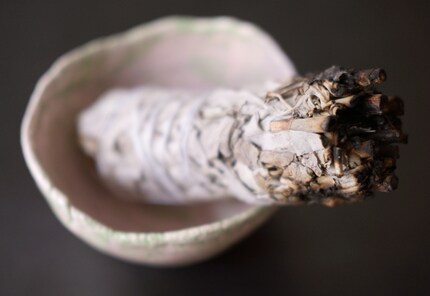
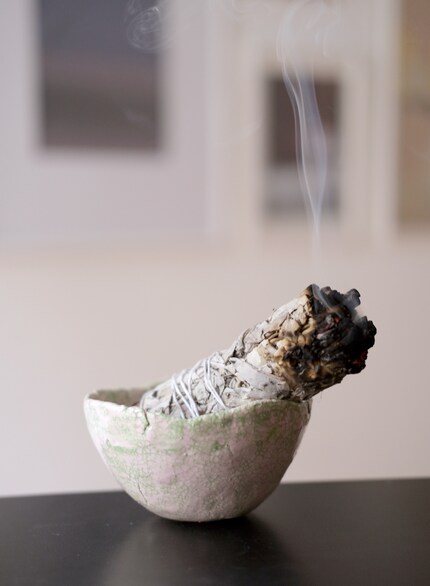
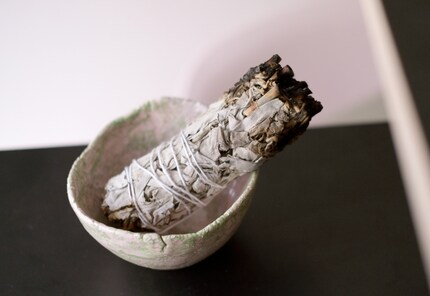
After several incense burning sessions, I adapt my approach slightly. In the meantime, I’ve learnt to leave the window closed so the fragrance can develop better, become more intense and last longer. Only once the incense has finished burning do I air the place again. Another difference is that I now prefer to use a candle to light the smudge stick rather than a lighter or match. It’s easier and quicker. I’ve also started to enjoy the ritual. The brief moment’s pause does me good. Maybe there is something to the whole mumbo jumbo after all. At this point, I can’t scientifically prove why I feel good vibes.
Burning dry sage leaves emits a pleasant aroma. Like a whole forest full of pine trees. The ritual is quick to carry out; the bunch of sage doesn’t take up much space and, unlike electric room diffusers, it doesn’t rely on electricity. In contrast to the popular Internet hack of hot vinegar or lemon water (site in German) in a bowl, this ritual is elegant and eye-catching. Especially if you opt for decorative dishware. Another bonus is that the smudge stick is cheap, you can even make it yourself. And once you’re finished, the debris can go in the food recycling bin.
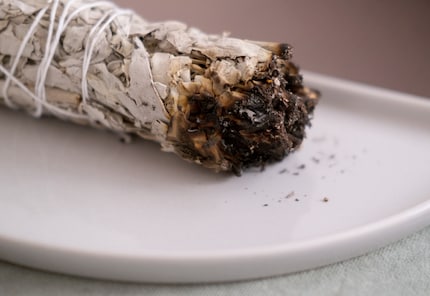
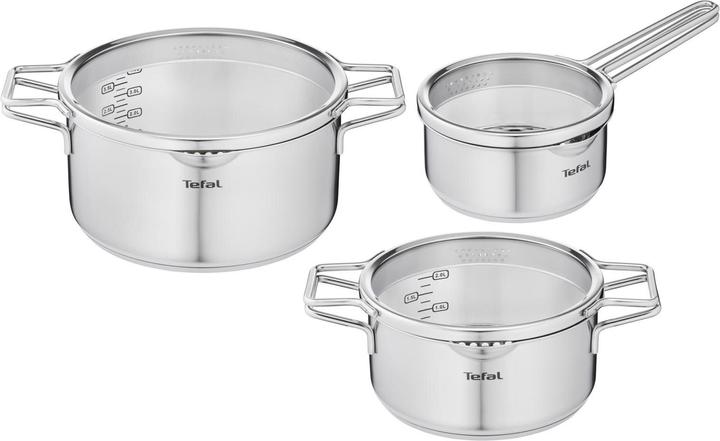
Tefal Nordica cookware set, 6 pcs
24 cm, Pot, Stainless steel